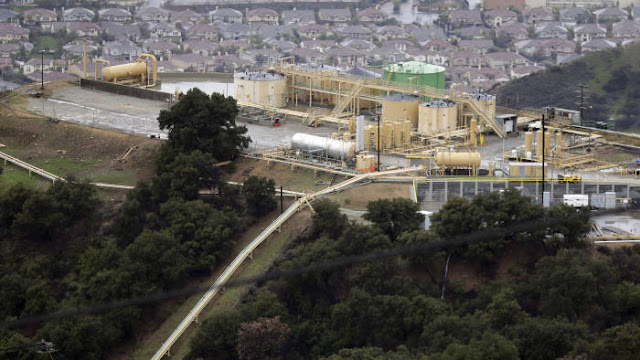US natural gas utilities are rallying against an emergent threat to their historically stable business as communities worried about climate change block new pipelines and gas connections for homes. As the cleanest-burning fossil fuel, natural gas reduced total US energy-related carbon emissions as it displaced coal at power stations. The majority of household heating, hot water and cooking is now fuelled by gas, while it is also the most-used input for US electricity generation, aided by cheap supplies from shale drilling.
However, this has led annual emissions from gas to increase by nearly 500m tonnes in the past 10 years, including a 4 per cent rise in 2019, the Energy Information Administration estimates.
This rise has stoked opposition against new pipelines and home connections, with climate activists saying energy demand could be better served by renewable sources.
The city of Berkeley last year banned gas connections in new construction, sparking similar efforts in other communities. In New York state, regulators stopped a new pipeline sought by National Grid, causing the UK-based utility owner to halt gas hookups for new customers until the governor threatened to revoke its operating licence.
These setbacks have led the American Gas Association to release its first climate change position statement. Its document published last month contained 10 commitments for a lower-carbon economy and eight principles, the last of which declares that public policy “should include the option of natural gas for consumers”. “We are seeing a growing velocity of efforts to remove natural gas from the system with very little regard to cost, scale, options and the current environmental contributions that natural gas is making today and will continue to make in the future,” said Karen Harbert, AGA chief executive, in an interview with the FT. The AGA’s 200-strong membership includes gas utilities and their corporate parents including Berkshire Hathaway, CenterPoint Energy and Southern California Gas. They delivered 20tn cubic feet of gas in 2018, equal to two-thirds of US production.
The annual report of Sempra Energy, the San Diego-based owner of SoCalGas, highlighted concerns by identifying “a substantial reduction or the elimination of natural gas as an energy source in California” as a business risk for its utilities in the state.
Mark Brownstein, senior vice-president of energy at the Environmental Defense Fund, said gas utilities used to be able to take for granted the fact that they had a captive customer base.
“They are now going to have to compete — and they’re going to have to compete not just on how well the product cooks food or heats homes, but how clean it is.”
“The discourse has completely changed this year,” said Ryan Kelley, portfolio manager of the $850m Hennessy Gas Utility Fund. “For the next decade there will be a real conversation around decarbonisation, electrification and renewables.” The AGA argues that gas-fired electricity supports renewables when the sun or wind does not shine or blow. Less energy was lost shipping gas to homes in pipelines than by sending electricity over wires, the association said. The association’s 10 climate commitments included pledges to further reduce utility methane emissions, upgrade infrastructure and “increase collaboration” with producers and pipeline companies. Natural gas is principally methane, which is 25 times stronger than carbon dioxide in trapping heat in the atmosphere. Leaks of methane from the utilities’ gas distribution businesses halved between 2005 and 2017 to 11.9m tonnes on a CO2-equivalent basis, according to the Environmental Protection Agency.
However, methane leaks from the industry’s suppliers in the US exploration and production sector increased 9 per cent over the period to 109.6m tonnes CO2-equivalent basis, the data show.
The Trump administration has proposed to rescind methane emissions limits for producers and processors, and remove air regulations for oil and gas transmission and storage. The measures would increase methane emissions by about 8m tonnes on a CO2-equivalent basis by 2025, the EPA estimated.
The AGA declined to take a position on the administration’s proposal, which did not address local gas distribution systems. Ms Harbert questioned whether it constituted a rollback.
In the past decade, US officials praised natural gas as a “bridge fuel” that would temporarily support the economy until renewable energy became more widespread. “We see it as a foundational fuel for decades and decades and decades to come,” Ms Harbert said. “Those that argue it’s a bridge fuel have an inconvenient truth that we have a lot of it. So they have to change the narrative that it is so bad, you have to get it out of the system.”
In the past decade, US officials praised natural gas as a “bridge fuel” that would temporarily support the economy until renewable energy became more widespread. “We see it as a foundational fuel for decades and decades and decades to come,” Ms Harbert said. “Those that argue it’s a bridge fuel have an inconvenient truth that we have a lot of it. So they have to change the narrative that it is so bad, you have to get it out of the system.”



Comments
Post a Comment